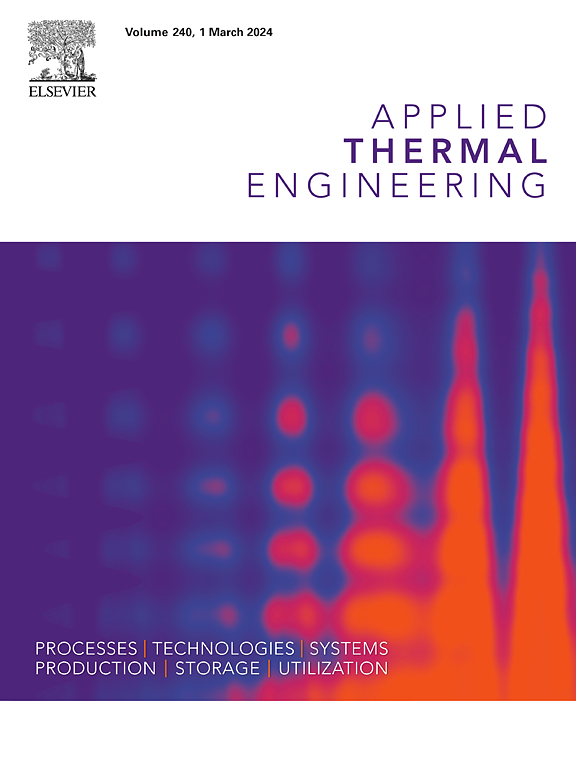Janus水力发电系统的自吸附和蒸发发电
IF 6.9
2区 工程技术
Q2 ENERGY & FUELS
引用次数: 0
摘要
吸附和蒸发在自然界中广泛存在,引起了人们对环境能源收集的越来越多的兴趣。在此,我们提出了自吸附蒸发Janus发生器来诱导连续供电(环境湿度为30 ~ 85%),解决了连续供水和有效水梯度的问题。经氯化钙(CaCl2)溶液修饰的亲水区形成自吸附功能层,实现连续供水;疏水区形成蒸发功能层。Janus结构创造了一个独特的湿/干界面,以保持有效的水梯度。在润湿区,由于双电层(EDL)效应,更多的正离子被吸引到碳表面。通过吸附和蒸发循环,产生连续的水流和离子迁移,导致干湿区之间存在显著的电位差。厘米大小的器件暴露在环境中可以产生0.67 V的连续电压。提出的自吸附蒸发Janus发生器为环境能量收集提供了新的见解,在可穿戴电子设备中显示出巨大的潜力。本文章由计算机程序翻译,如有差异,请以英文原文为准。
Power generation from self-adsorption and evaporation in Janus hydrovoltaics
Adsorption and evaporation is widely available in nature that attracts increasing interests in environmental energy harvesting. Here, we propose self-adsorption and evaporation Janus generator to induce the continuous electricity (ambient humidity of 30 ∼ 85 %), solving the issue of continuous water supply and effective water gradient. The hydrophilic region modified with Calcium chloride (CaCl2) solution forms self-adsorption functional layer to achieve continuous water supply and the hydrophobic region forms evaporation functional layer. The Janus structure creates a distinct wet/dry interface to maintain effect water gradient. At wetting region, the more positive ions are attracted to carbon surface ascribed to electric double layer (EDL) effect. Through adsorption and evaporation cycles, it generates continuous water flow and ions migration that induces significant potential difference between wetting and drying regions. A centimetre-sized device can generate a continuous voltage of 0.67 V when exposing to the environment. The proposed self-adsorption and evaporation Janus generator provides new insight in environmental energy harvesting, showing great potential in wearable electronic device.
求助全文
通过发布文献求助,成功后即可免费获取论文全文。
去求助
来源期刊

Applied Thermal Engineering
工程技术-工程:机械
CiteScore
11.30
自引率
15.60%
发文量
1474
审稿时长
57 days
期刊介绍:
Applied Thermal Engineering disseminates novel research related to the design, development and demonstration of components, devices, equipment, technologies and systems involving thermal processes for the production, storage, utilization and conservation of energy, with a focus on engineering application.
The journal publishes high-quality and high-impact Original Research Articles, Review Articles, Short Communications and Letters to the Editor on cutting-edge innovations in research, and recent advances or issues of interest to the thermal engineering community.
 求助内容:
求助内容: 应助结果提醒方式:
应助结果提醒方式:


